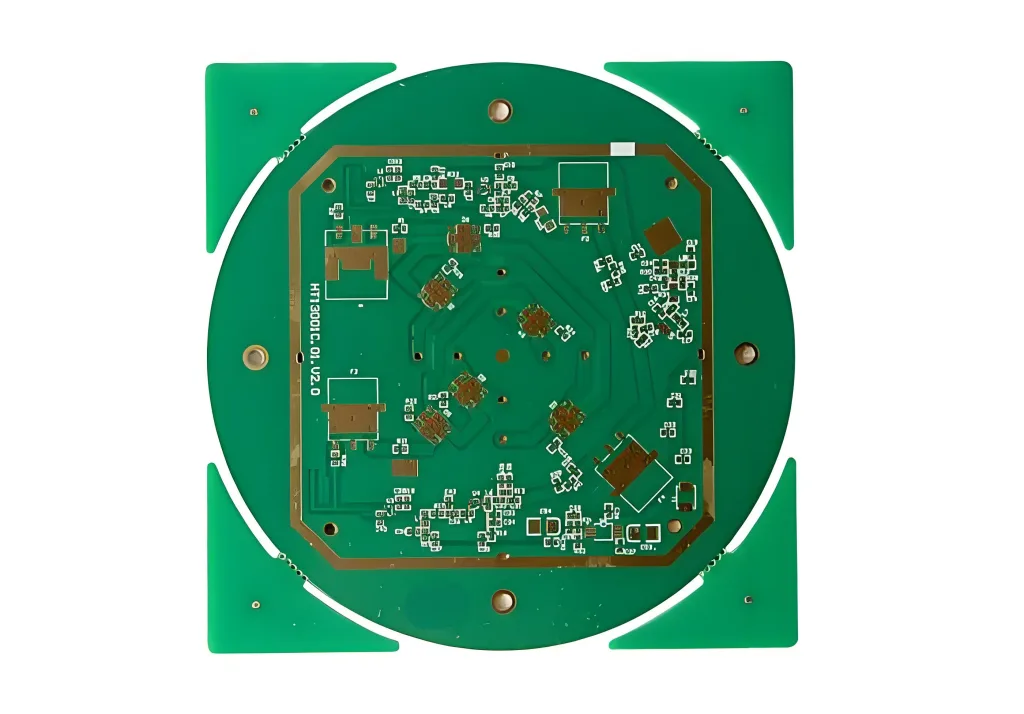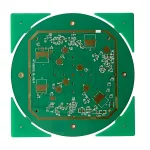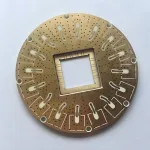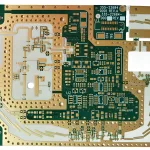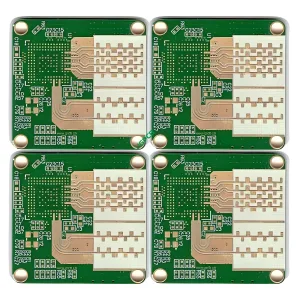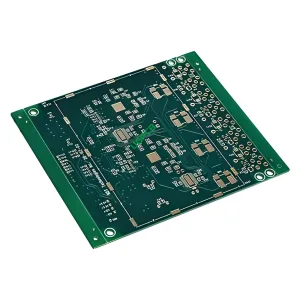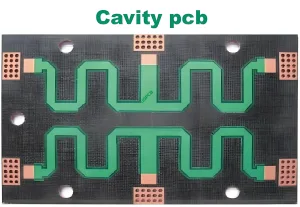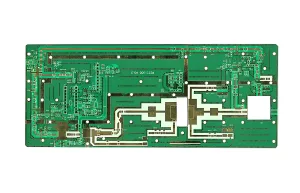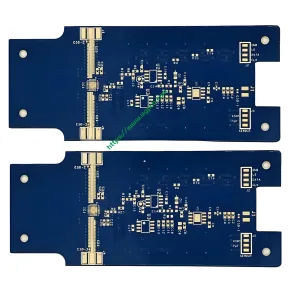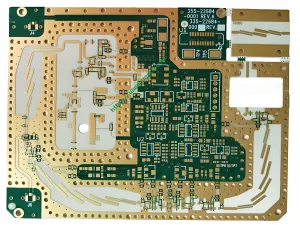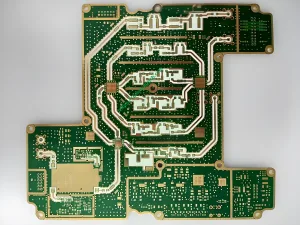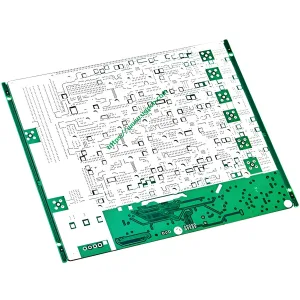Rogers Rt / Duroid RO6002 Материал печатной платы
Rogers Rt / Микроволновый материал Duroid RO6002 - это своего рода низкопостоянная постоянная ламинат, которые могут соответствовать строгим требованиям механической надежности и электрической стабильности в конструкции сложных микроволновых структур.
Температурная зависимость диэлектрической постоянной была измерена из – 55OC к + 150оС. Результаты показывают, что диэлектрическая постоянная материала обладает превосходной устойчивостью к изменению температуры, и может соответствовать требованиям фильтра, Дизайнеры линий осциллятора и линии задержки для стабильной электрической производительности в дизайне.
Rogers RO6002 PCB Основные преимущества
1. Низкая потеря обеспечивает превосходную производительность на высоких частотах
2. Строго контролируемая диэлектрическая проницаемость и толерантность к толщине
3. Отличные электрические и механические свойства
4. Очень низкая скорость изменения диэлектрической постоянной с температурой
5. Коэффициент расширения поверхности, эквивалентный медной фольге
6. Низкое расширение оси Z.
7. Низкая скорость выхлопных газов, Идеальный материал для авиационных применений
Приложение для печатной платы: Фазовая массивная антенна,Наземные и воздушные радиолокационные системы, Глобальная система позиционирования, Power Backplane,Сложная многослойная цепь с высокой надежностью, Коммерческая авиационная система противодействия Collision,Сеть формирования луча
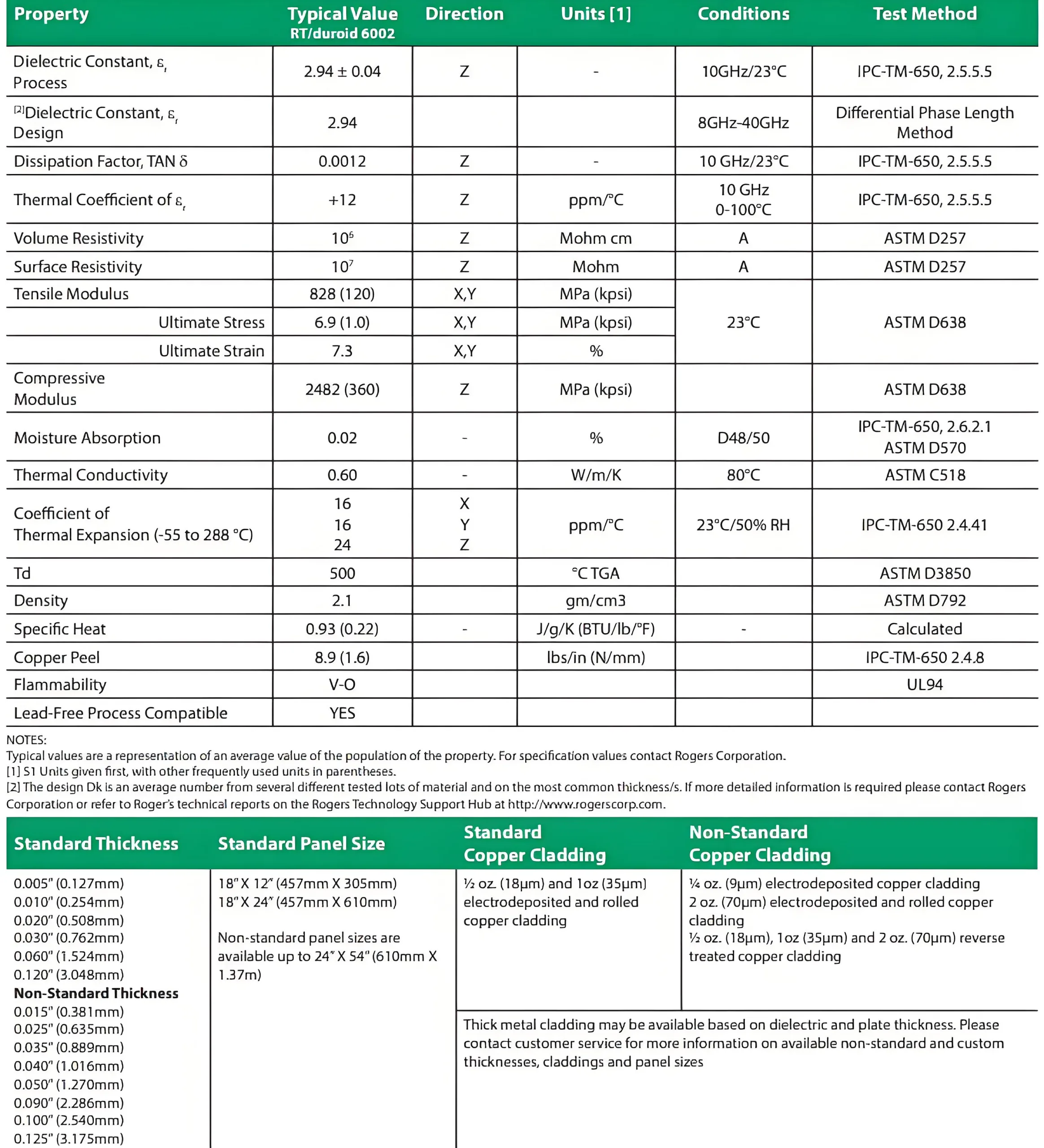
Таблица параметров PCB Rogers RO6002
Для получения дополнительной технической информации о материале Rogers RO6002, Пожалуйста, посетите: Техническая спецификация Rogers RO6002
RT / Duroid6000 Series, RO3000 Series и RO3200 Series ™ СЕРИЯ СЕРИЯ НАДЕЖИНАЯ МАТЕРИАЛА ПХБ ПХБ - это политетрафторэтилен (ПТФЭ) составные материалы, которые содержат керамические частицы заполнения с большим интегральным номером (>50%). Высокие свойства RT / Дуроид 6002, Материалы платы PCB Series RO3000 и серия RO3200 заставляют их иметь низкий коэффициент теплового расширения оси Z (КТР), Отличное гальванирование с помощью надежности отверстий, и плоская CTE тесно совпадает с медной для достижения стабильности хорошего размера. Наполнители в RT / Дуроид 6006 и 6010 иметь высокие диэлектрические постоянные и уменьшить размер цепи.
Высокая способность материала также подвержена пористости примерно 5% объем. Микропора в композите, по -видимому, существует на границе раздела между наполнителем и PTFE, Даже если он не может быть обнаружен в поперечном сечении с помощью сканирующей электронной микроскопии. Из -за низкой поверхности производительности PTFE и обработанного керамического наполнителя, Микропоры не приведут к высокой поглощению воды. Однако, Низкие поверхностные жидкости, такие как органические растворители и водные растворы, содержащие поверхностно -активные вещества, могут проникать в микропоры.
Поскольку PTFE и керамические наполнители химически инертны в большинстве химических веществ в обработке, Поглощение жидкости только заполняет микропоры и не изменяет физические свойства этих материалов платы печатных плат. Однако, до обработки тарелок при высоких температурах (например, ламинирование, SN/PB Reflow Sploring, и т. д.), летучие вещества, которые проникают в композитные материалы, должны быть удалены. Тщательно промыть сразу после контакта с обработкой химических веществ, чтобы гарантировать, что при выпечке деталей не осталось никаких нелетучих растворимых веществ.
Нестабильное удаление
Неспособность удалить летучие вещества перед высокотемпературными процессами, такими как ламинирование или паяль для рефтова, может привести к диэлектрической пеной или расслоению. Было обнаружено, что следующие обработки выпечки устраняют проблемы, связанные с летучими веществами во время высоких температурных процессов.
Основное руководство для выпечки
1. Перед ламинированием.
Перед ламинированием, внутренний ламинат должен быть ламинирован 300 градусы азота. Если пластины прижимаются вместе в стерилизаторах высокого давления, Процесс выпечки может предшествовать процессу нажатия.
2. Перед химическим месторождением меди.
Выпекать тарелки хотя бы 1 час в вакууме или в 300 градусы азота перед химическим осадком меди. Это ключ к выпечке, потому что после того, как края и механические свойства многослойных пластин покрыты электроса, Эфир этиленгликоля, поглощаемый коммерчески доступными травлением натрия или спирта от промывки, трудно удалить.
3. Перед припадкой.
Перед связью с рефлюксом или выравниванием горячего воздуха (ХАСЛ), доска выпечена по крайней мере 2 часы в вакууме или в азоте в 300 градусы ф. После выпечки, Время проживания после применения потока не больше, чем 30 секунды. Если требуется повторная обработка, Вышеупомянутое лечение для выпечки должно быть повторено.
При выпечке в мешке для очистки азота, Воздушный поток азота от сумки необходим для обеспечения удаления летучих веществ в сумке. Сходным образом, Необходимо соблюдать осторожность при использовании вакуумных мешков, чтобы гарантировать, что вакуумный трубопровод не заблокирован материалом пакета. Если в сумке остается летучие условия, Они сжатся на доске, когда она охлаждается. Это значительно снижает эффективность выпечки. Если духовка не предварительно нагрета, Рекомендуемое время выпечки должно быть использовано для подведения духовки до температуры.
Диэлектрическое загрязнение
Неспособность промыть эти материалы платы ПХБ в достаточном количестве после контакта с химическими веществами обработки иногда могут привести к диэлектрическому загрязнению или увеличить диэлектрические потери. Эти проблемы можно предотвратить путем минимизации воздействия растворителей с низкой поверхностью энергии, содержащих нелетучивые компоненты, и используя разумный процесс промывки. Например, не разрешено погрузиться в пластин. Кроме того, Тарелка должна быть промыта сразу после травления.
Основные рекомендации по предотвращению диэлектрического загрязнения

Основное руководство для выпечки
1. Минимизировать воздействие растворителей низкой поверхностной энергии, содержащих нелетучих компонентов.
2. Регулярно сбрасывать и промыть, чтобы предотвратить нелетую остатки.
3. Если диэлектрическая поверхность находится в контакте с водорастворимым раствором с низкой поверхностной энергией или водорастворимым органическим раствором, содержащим нелетучивые вещества, Тарелка должна быть погружена в 70 F горячая дистиллированная вода для 15 минут сразу.
4. Если диэлектрическая поверхность находится в контакте с нерастворимыми в воде растворителей, содержащих нелетучивые вещества, Тарелка должна быть погружена в водорастворимые органические растворители (например. метанол, этанол или изопропанол) для 15 минут сразу, а затем в горячей дистиллированной воде для 15 минуты
 ЛОГОТИП УГКПБ
ЛОГОТИП УГКПБ

